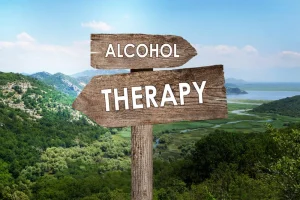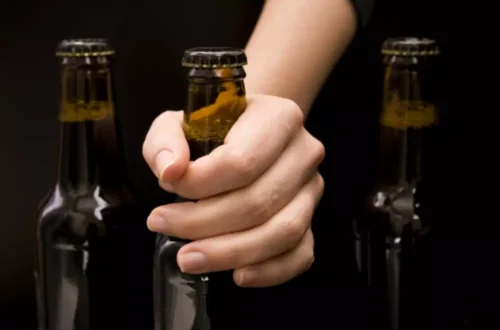
Dr. Bishop is also a certified open water scuba diver, he enjoys fishing, traveling, and hunting. Her over 15 years’ experience working in healthcare administration and management quickly launched her into a leadership https://ecosoberhouse.com/ role. Now serving as the Director of Human Resources since 2018, she leads our organization through the intricate requirements of recordkeeping, recruitment, staff development as well as compliance.
Relapse prevention
Additionally, individuals may engage in cognitive distortions or negative self-talk, such as believing that the relapse is evidence of personal weakness. Ivori Zvorsky is an undergraduate student obtaining her major in psychology at the University of Richmond, USA. Working with Dr Lindgren, she has investigated abstinence violation effect implicit alcohol cognitions, along with the impact of the environment on self-reported measures of alcohol consumption. She hopes to continue investigating implicit and explicit measures of substance abuse in the future. Jim is a recovering alcoholic who successfully abstained from drinking for several months.
- The RP model has been studied among individuals with both AUD and DUD (especially Cocaine Use Disorder, e.g., Carroll, Rounsaville, & Gawin, 1991); with the largest effect sizes identified in the treatment of AUD (Irvin, Bowers, Dunn, & Wang, 1999).
- Such findings have contributed to renewed interest in negative reinforcement models of drug use [63].
- He calls this “urge surfing.” Instead of denying our addictive nature or hating ourselves for it, we learn to keep living in spite of it.
- The last decade has seen numerous developments in the RP literature, including the publication of Relapse Prevention, Second Edition [29] and its companion text, Assessment of Addictive Behaviors, Second Edition [30].
Is Trazodone Habit-Forming Or Addictive?
When an abstinence violation occurs, the attributions an individual makes play an important part in determining the trajectory of subsequent use. When abstinence violation occurs, individuals typically enter a state of cognitive dissonance, defined as an aversive experience resulting from the discrepancy created by having two or more simultaneous and inconsistent cognitions. Abstinence violators realize that their actions (e.g. “I drank”) do not line up with their personal goal (e.g. “I want to abstain”) and feel compelled to resolve the discrepancy. In this case, individuals try to explain to themselves why they violated their goal of abstinence. If the reason for the violation is attributed to internal, stable, and/or global factors, such as lack of willpower or possession of an underlying disease, then the individual is more likely to have a full-blown relapse after the initial violation occurs.
- Personality, genetic or familial risk factors, drug sensitivity/metabolism and physical withdrawal profiles are examples of distal variables that could influence relapse liability a priori.
- The contents of this website such as text, graphics, images, and other material contained on the website (Content) are for informational purposes only and do not constitute medical advice; the Content is not intended to be a substitute for professional medical advice, diagnosis, or treatment.
Balanced lifestyle and Positive addiction

Thus, these findings do not support the once-popular theory that by emphasizing the uncontrollability of alcohol consumption (i.e. ‘powerlessness’ over alcohol), AA creates an ‘abstinence violation effect’ that makes the relapses more severe (Marlatt and Donovan, 1985). It is important to highlight that most of the studies cited above did not provide goal-matched treatment; thus, these outcomes generally reflect differences between individuals with abstinence vs. non-abstinence goals who participated in abstinence-based AUD treatment. In a 2013 Cochrane review which also discussed regarding relapse prevention in smokers the authors concluded that there is insufficient evidence to support the use of any specific behavioural intervention to help smokers who have successfully quit for a short time to avoid relapse. The verdict is strongest for interventions focused on identifying and resolving tempting situations, as most studies were concerned with these24. Along with the client, the therapist needs to explore past circumstances and triggers of relapse.
4. Current status of nonabstinence SUD treatment

Twelve-month relapse rates following alcohol or drug cessation attempts can range from 60 to 90 percent, and the AVE can contribute to extended relapses. Counteracting the effects of the AVE is necessary to support long-term recovery from addiction. Gillian Steckler is a research assistant for Dr Katie Witkiewitz at Washington State University Vancouver where she also attended and received a bachelor of science degree in psychology. She assists Dr Witkiewitz in alcohol and substance abuse research, prevention, and treatment. Another example is Taylor, who has been doing a wonderful job taking walks and engaging in healthier eating.
In general, more research on the acquisition and long-term retention of specific RP skills is necessary to better understand which RP skills will be most useful in long-term and aftercare treatments for addictions. The use of functional magnetic resonance imaging (fMRI) techniques in addictions research has increased dramatically in the last decade [131] and many of these studies have been instrumental in providing initial evidence on neural correlates of substance use and relapse. In one study of treatment-seeking methamphetamine users [132], researchers examined fMRI activation during a decision-making task and obtained information on relapse over one year later. Based on activation patterns in several cortical regions they were able to correctly identify 17 of 18 participants who relapsed and 20 of 22 who did not. Functional imaging is increasingly being incorporated in treatment outcome studies (e.g., [133]) and there are increasing efforts to use imaging approaches to predict relapse [134].
- While attesting to the influence and durability of the RP model, the tendency to subsume RP within various treatment modalities can also complicate efforts to systematically evaluate intervention effects across studies (e.g., [21]).
- This is especially true if we are involved in a twelve-step program, as we now realize we must reset our chips.
- As an HR professional, Brie’s primary focus is on ensuring that our organization attracts and retains the most talented and qualified individuals to help us fulfill our mission of providing compassionate care to those struggling with addiction.
- None of the studies included a waitlist control; thus, AA/TSF was always compared to some kind of active treatment.
- Findings also indicate that AA/TSF may perform as well as other clinical interventions for drinking intensity outcomes.
- This finding was later extended in the COMBINE study, such that G carriers showed a greater proportion of days abstinent and a lower proportion of heavy drinking days compared in response to NTX versus placebo, whereas participants homozygous for the A allele did not show a significant medication response [93].

Marlatt’s relapse prevention model: Historical foundations and overview

